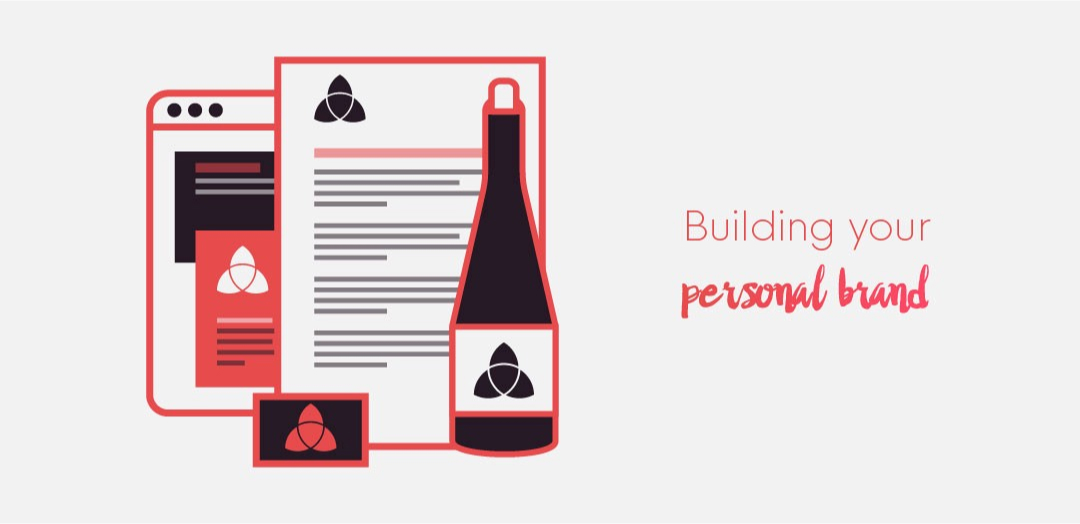A while ago I put out a twitter poll asking people what would have been really helpful to learn if you were starting out in design again…

This was particularly helpful for a few reasons:
Obviously you need to learn to use the design principles. A given fact. We go over these every other month on the newsletter.
It shows that the areas I’m equipped to teach have been on point with what my target audience needs to hear.
People need all three of the areas above to get early work as a designer.
Standing out among that crowd is proving to be harder and harder each day.
A lot of people already do what you do, so how do you rise above what other people are doing? You’ve got to work on your personal brand.
“Oh no! Not another ‘work-on-your-personal-brand’ post…”
So what is branding?
To stop repeating very cliche topics, I am going to skip the history of all the things about cattle and hot iron… I’ll talk about what branding is as it exists today, mainly by talking about what it isn’t.
We artists and designers alike love to create visual gold. We find the things we create to be small extensions of ourselves. We’re very emotionally attached to our work.
As people who do that commercially, either with clients or with employers, we find that the hardest person to design for is ourselves.
*Why is that?*
Branding is not just your logo.
Your logo is a symbol, something that serves as a means to recognize the company and its product or service.
Your logo is part of a bigger system. It serves as the entry point into your brand. A logo, trademark, or word mark is going to be the first thing a person sees, like seeing your face.
Branding is not just your style guide
It doesn’t exist as a spreadsheet of visual gold. Even with as well that you have planned out each piece of your brand visually, your brand is much more than the components supporting it.
It isn’t even the product or service itself.
Branding is the way that other people see your brand.
Everything you say about your company, your designs, your personal self is nothing unless people see it the way that you do.
Their first reaction of your work? It’s a gut instinct about how someone feel’s about a person or a company. This can either work for you or against you.
Think of some of the more recent things a few brands have done, like Uber, United Airlines, Pepsi… the keys to these brands is in the hands of people they cater to. It took a few miscalculated moves by some of the best to be labeled as examples of what not to do with your brand.
Brand perception is something that can occur quickly. It can develop quick over the first few months, or it may change quickly over the life of the brand.
It’s important that when you do this for yourself that you put the work in to avoid constantly changing things. I’ll give you a project brief at the end to help you get started if you need to work on it.
Who then has control of your brand?
The nice thing is that we are talking about your personal branding.
You have more control with the way you present yourself than the big companies that surround us. If we plan on setting the right tone, we need to define what messages we want to send to other people.
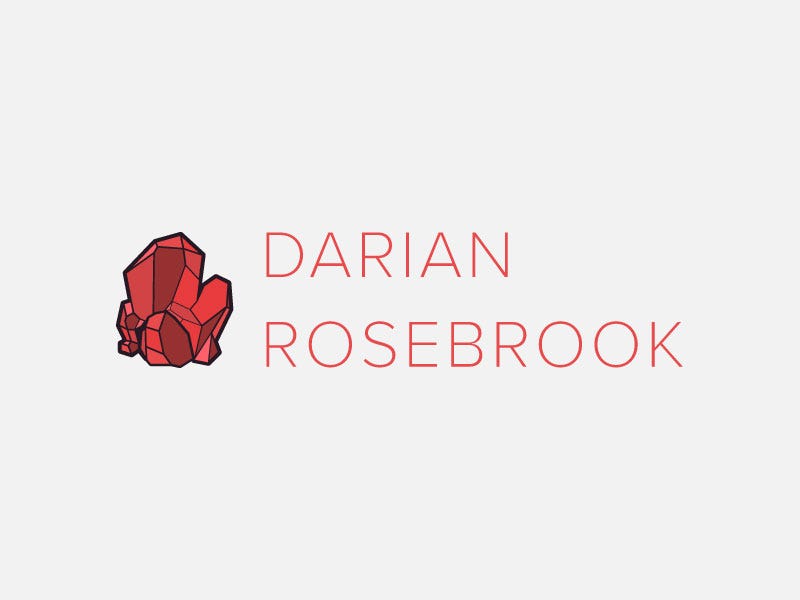
Starting off your personal brand
A handful of you might already be well ahead in the game of branding your own identity. You have identified what you do and have a general knowledge why you do it.
This area will be confirmation you’re going in the right direction.
For those of you who haven’t started building up your personal brand, or have barely scratched the surface, I want you to answer three questions for me.
Who are you?
What do you do?
Why does it matter?
I used to think for the longest time that I didn’t matter and neither did the work I do. As subjective of an argument that may be, I struggled with answering these questions for myself.
My internal and external selves were colliding because I wasn’t being a true version of myself. I didn’t wear who I could be on the inside as part of my outward appearance.
I’ll answer these for you to kind of give you a sense of what to look for
*I’m Darian Rosebrook, **a creative entrepreneur *who’s had several years experience building my own businesses, managing brands, and growing various audiences and client bases.
*I help smaller brands attract the right audience by solidifying their audience’s experience and unifying their brand’s visual identity*
There are plenty of brands out there that are trying to break into the larger markets, and though they have done their best, they need something to help make their brand more magnetic. I want to help them move their great products and services out to more people in need of them.
Once you know the answers to these questions, you can start to build your brand around that. The easiest way to start is visually.
Just like getting ready for a date. We’re going to explore making your first impression a good one.

“This is the third time I’ve changed my logo”
Actually, funny story… I’ve changed my logo three times already.
Back at the end of 2015 when I started learning to design websites, I needed to get my website up. Sadly almost nothing from that first website exists today. You don’t have to start with 100% skill.
The logos above consist of:
My attempt with free design software (InkScape) in 2015 before I learned anything about design principles,
My refresh when I started learning branding at the beginning of 2016 (mainly this one was designed because it was fun),
And when I felt my skills were good enough to warrant a better logo.
The logo you make when you start out doesn’t have to be anything more than your name, in a decent and professional font. But there are a few things you can do to differentiate yourself.

What should I do for my logo?
Well that depends on what kind of personality you have.
I am highly creative and feel like I would like some form of brand-mark that would represent me. I am also fairly undiscovered, but believe that what I know can be valuable to people once they find it. Hence my logo symbol represents a gemstone before it’s been cut.
There are more things to my logo, but what I created is considered a symbol or icon logo.
You have many possibilities to what type works best for you:
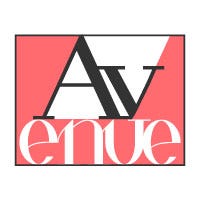
Word Mark
Wordmarks are great for people who have unique names or are really really proud of their own name / brand name. They consist of the whole word represented by typography.
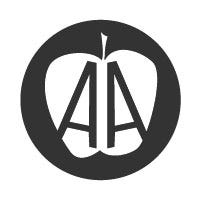
Letter Mark
Sometimes a name needs some other way to be unique. Using the initials, or letters that signify what something is can be useful to stand out. Think NASA, IBM, or HBO.
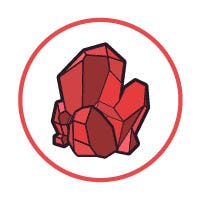
Symbol
Symbols are exactly that, something that symbolizes what the brand is about. My gem is a symbol for my personal self as well as the logo for my company.
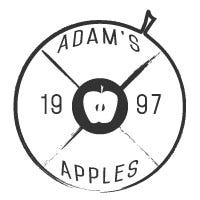
Emblem
Designs like the UPS logo, Starbucks logo, The NFL logo are emblems. They sit in a shape that defines the rest of the logo and it’s components.
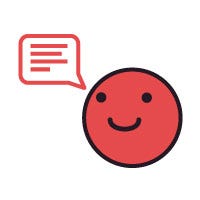
Mascot
A creative character or avatar that represents your company, like the Trix Bunny, Honey Nut Cheerio’s bee, and The Kool-Aid man are mascots.

Abstract
Designs that don’t necessarily pertain to any recognizable symbol, but are a unique shape or symbol for that brand specifically
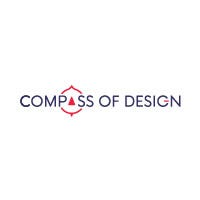
Combinations
Any of the above mixed together can make a combination. Maybe a wordmark with an icon, or a mascot and an emblem. You can mix any to get these results.
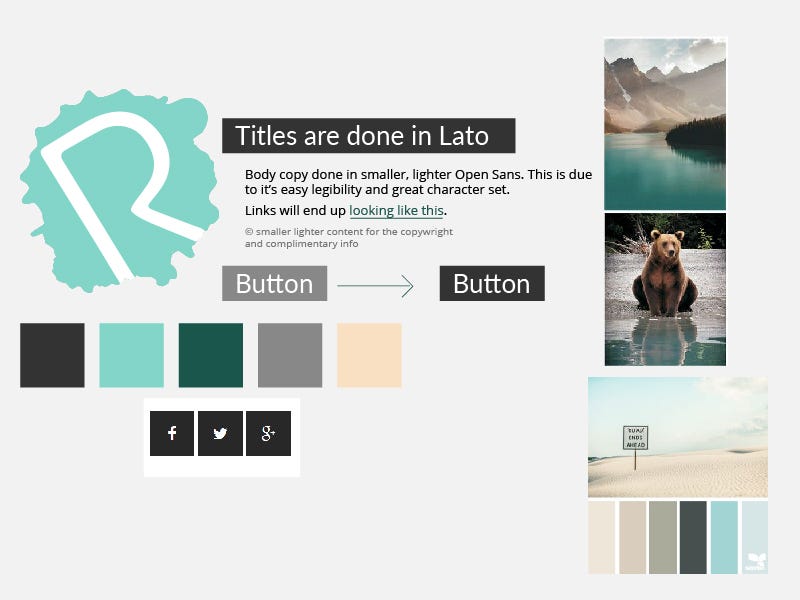
Everything else you share should be branded too
So as you start to decide what you are doing with your logo, sometimes it helps to bring all your ideas into one space.
When I first started out, I had a vague idea of what things inspired me. I collected various images, colors, icons, everything I thought of that was digestible enough to describe me.
Since this is your personal brand, you have the ability to start out based on your interests. But as we’ll talk about in the future about creating a portfolio that converts, the place you share your work isn’t a vanity wall. It’s supposed to be geared towards converting visitors to clients, employers, and customers.
As I continued to grow, there were a lot of things that I had to change. I found really tend to represent me a lot better. As I was planning my first website, I gathered a few sources of inspiration like color palettes, styles of titles, image inspirations, typography inspirations.
I focused on making this a more professional way that I show my interests.
As this grew over time, and especially after redoing my brand identity again, I started to explore more areas and refining my brand even further.
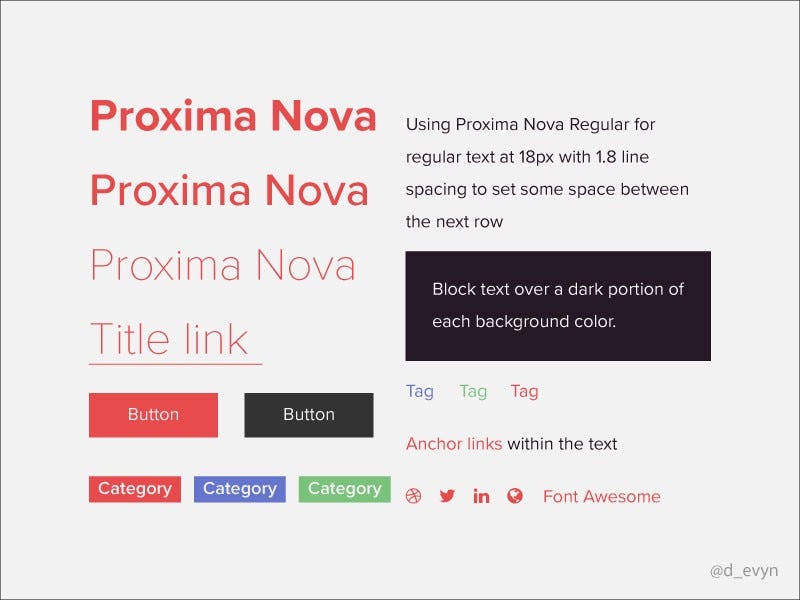
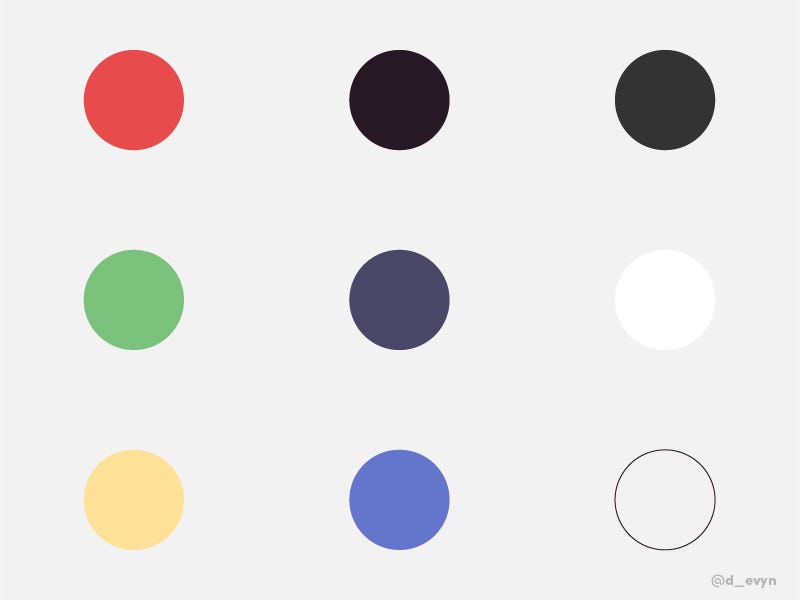
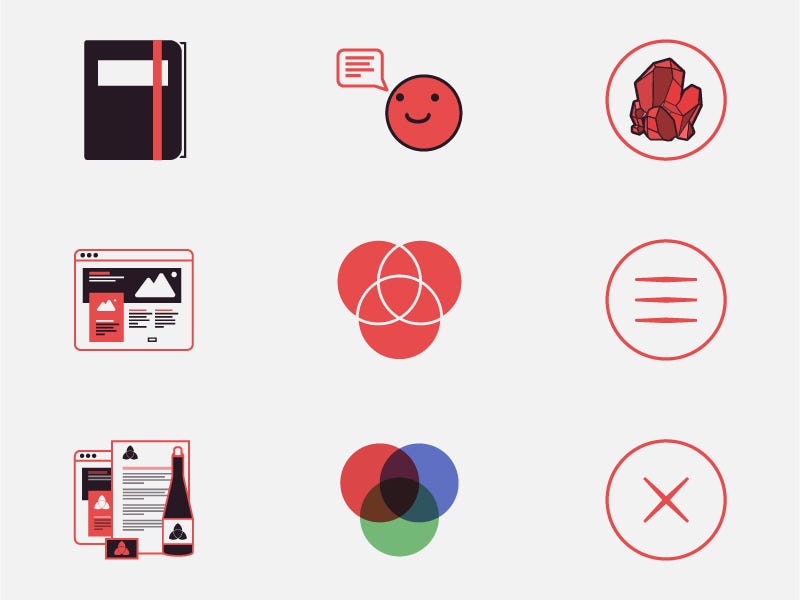
Brand equity will make or break you.
The colors and logo that you choose hold your brand for a while, and as you start to build more awareness, your brand starts to mean something to other people.
The farther you go in your career the more recognizable your style becomes and that is what brand equity is all about. Brand equity is the amount of investment you have into your brand and how many people can recognize your brand by how it looks and what it stands for. They then start to find it either financially, personally, or emotionally valuable.
When you use your personality as your brand, things that you are doing online will be how other perceive you. So make sure that you have the correct privacy settings turned on for anything that you don’t want to be seen by future clients or employers.
You can start using things in your social media accounts and professional services, along with business cards, letterhead, email signatures, and so many other things that you could think of.
Need even more help?
Here’s a design brief for you.
Let’s build your personal brand into something you can be proud of.
Personal Branding Brief:
Estimated time 6–10 days: Try not to spend too much time over thinking this whole process or you will never actually get any of it done.
Deliverables
Personal Logo (from whatever style you are capable of making that represents you)
A brand guideline with colors, styles, typography choices, and imagery
A simplified version of your logo (that could fit in a profile photo anywhere you’d use it)
Any sketches to show your process
There are plenty of people out there today doing work on the internet, so many people means that at some point you are going to have to try to rise above the noise.
One of the strongest things you can do for yourself is to clearly define your personal brand. You will find that having to design for yourself can be one of the more frustrating things you ever have to deal with in design.
Think about what you would like for your logo. If you have one already, does it satisfy what you feel is appropriate for your brand? You can do a symbol, word mark, letter mark, etc… but you should do what feels right for you in the beginning.
Ask yourselves these questions and give yourself some answers.
Who are you?
What do you do?
Why does it matter?
Once you figure this out, you can start visually researching things that represent your values and message. Even if it’s just really good design, that choice could represent you as well.
After you have completed this step, you should start experimenting with colors and styles, but make sure it resembles you and your personality.
This is your chance to sell yourself, so make it professional and eye-catching. Remember that some of the most remarkable brands have the simplest logos.
After creating your core brand identity, think of the other applications you might need to unify your brand to create your own style.
Creating other things like symbols, marks, typography and color choices will be carried over to compliment your logo and message.
After you are done, review it and put it to use.
Get your new work out there
Use this new logo like the confidence you get after getting a good haircut. Get some clients, apply to that job… Just do something that you feel like you can do now.
If this is something you struggle with, please don’t let it go unchecked. Get some help from people around you.
Ask any other designer about their branding:
Designing for yourself can be one of the hardest things you do.

Struggling to get traction in your design career?
You are not alone, every week we go over ways to market yourself better by improving your design skills, your personal brand, and other topics to further develop yourself as a designer…
We’re building a community for the designers like you.
The Compass of Design Community is a growing place of positive and driven designers who are working at being masters of their craft. Whether they’ve been designing for years or are just getting started on their journey, you will find this a place where you can get the critical feedback on your work and connect with like-minded people.
Sign up for the Compass of Design newsletter to be notified when we reopen registration for the design community (:
